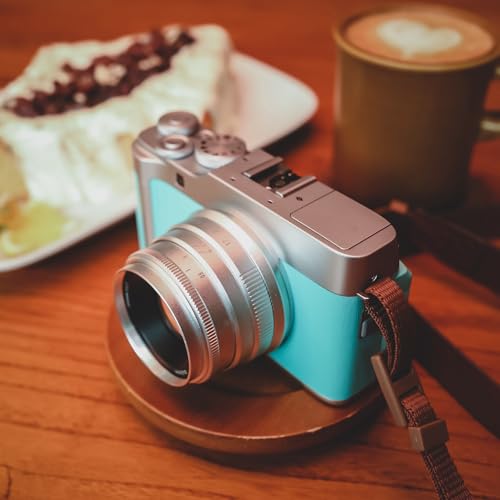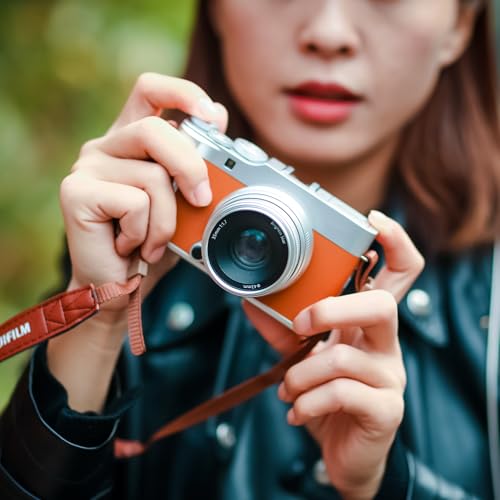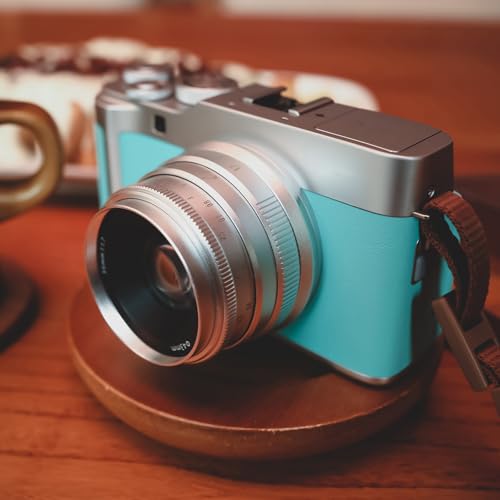As a passionate photographer who loves capturing the beauty of the night sky, I have spent countless hours experimenting with different settings on my mirrorless camera to achieve the perfect moon shots. The moon, with its mesmerizing glow and mysterious allure, presents a unique challenge for photographers looking to capture its intricate details and stunning phases.
Through trial and error, I have discovered the best settings that have helped me take breathtaking moon pictures that truly showcase the beauty of our celestial neighbor. From adjusting the ISO and aperture to finding the ideal shutter speed, every setting plays a crucial role in capturing the moon in all its glory.
In this article, I will share my go-to settings for photographing the moon with a mirrorless camera, along with some tips and tricks that have helped me elevate my moon photography game. Whether you’re a beginner looking to capture your first moon shot or an experienced photographer seeking to enhance your lunar images, these settings will help you unlock the full potential of your camera and create stunning moon pictures that will leave you in awe.
My Best Settings for Capturing Stunning Moon Pictures with a Mirrorless Camera
When it comes to photographing the moon with a mirrorless camera, getting the right settings is crucial to achieving sharp and detailed images. As an avid astrophotographer, I have experimented with various settings to capture the beauty of the moon at its best.
One of the key settings I have found to work well is setting the ISO to around 100-200 to minimize noise in the image. This lower ISO ensures that the image remains clean and sharp, especially when capturing the fine details on the moon’s surface.
- Aperture: For capturing the moon, I recommend using a narrow aperture of around f/8 to f/11. This helps in achieving a greater depth of field, ensuring that both the moon’s surface and its surrounding details are in focus.
- Shutter Speed: When photographing the moon, a faster shutter speed is essential to prevent motion blur. I typically use a shutter speed of around 1/125 to 1/250 seconds to freeze the moon’s movement and capture crisp details.
- Manual Focus: To ensure precise focus on the moon, I always switch to manual focus mode and carefully adjust the focus ring until the moon appears sharp and detailed in the viewfinder.
Understanding the Basics
Before diving into capturing stunning moon pictures with your mirrorless camera, it’s crucial to understand the basic settings and concepts that will help you achieve the best results. One of the key factors to consider is the exposure settings, including aperture, shutter speed, and ISO.
Aperture, Shutter Speed, and ISO
- Aperture: Adjusting the aperture controls the amount of light entering the camera. A wider aperture (lower f-stop) allows more light, while a narrower aperture (higher f-stop) lets in less light.
- Shutter Speed: The shutter speed determines how long the camera’s shutter remains open. A faster shutter speed is ideal for capturing sharp details of the moon, while a slower speed may result in motion blur.
- ISO: ISO measures the camera sensor’s sensitivity to light. A lower ISO is suitable for well-lit conditions, while a higher ISO is necessary for low-light situations but may introduce noise.
Choosing the Right Equipment
When it comes to capturing stunning moon pictures with a mirrorless camera, selecting the appropriate gear is crucial for achieving optimal results. As an enthusiast of astrophotography, I understand the importance of choosing the right equipment to enhance the quality of my lunar shots.
For moon photography, it is essential to use a mirrorless camera with a high-resolution sensor to capture the intricate details of the moon’s surface. Additionally, selecting a telephoto lens with a focal length of at least 200mm is recommended to achieve magnified and clear images of the moon.
- Camera: Opt for a mirrorless camera with a high-resolution sensor for detailed moon shots.
- Lens: Choose a telephoto lens with a focal length of 200mm or more for magnified images.
- Tripod: Use a sturdy tripod to stabilize your camera and avoid blurriness in long-exposure shots.
- Remote Shutter Release: A remote shutter release helps reduce camera shake during exposure, resulting in sharper moon images.
Camera Settings for Moon Photography
When capturing photos of the moon with a mirrorless camera, it’s important to adjust your camera settings to achieve the best results. Here are some recommended settings that I find work well for moon photography:
1. Manual Mode: Set your camera to manual mode to have full control over the settings. This allows you to adjust the aperture, shutter speed, and ISO according to the lighting conditions.
- 2. Aperture: Use a narrow aperture (higher f-stop number) to ensure the moon is in focus and sharp. An aperture of f/8 to f/11 usually works well for capturing the details of the moon.
- 3. Shutter Speed: Since the moon is a bright object, use a faster shutter speed to avoid overexposure. Start with a shutter speed of around 1/125 to 1/250 seconds and adjust as needed.
- 4. ISO: Keep the ISO low to minimize noise in your images. Start with a low ISO of around 100-200 and increase if necessary to maintain proper exposure.
Manual Mode vs. Automatic Mode
In my experience, I’ve found that using the Manual Mode on a mirrorless camera provides more control and flexibility when capturing moon pictures. When shooting in Manual Mode, I can adjust settings such as aperture, shutter speed, and ISO to achieve the desired exposure and sharpness.
On the other hand, Automatic Mode can be convenient for beginners or quick shots, but it may not always produce the best results when photographing the moon. The camera’s automatic settings may not be optimized for capturing the details and luminosity of the moon, leading to underexposed or overexposed images.
- Manual Mode allows for precise adjustments
- Automatic Mode may not always produce optimal results for moon photography
- Experimenting with Manual Mode can enhance your skills and understanding of camera settings
Tips for Capturing Stunning Moon Images
When trying to capture breathtaking images of the moon with a mirrorless camera, there are a few key tips that can help you achieve stunning results. One important aspect to consider is the camera settings, including the aperture, shutter speed, and ISO.
For optimal results, set your aperture to a medium value to ensure sharpness and clarity in your moon images. A smaller aperture will help you capture more details and textures on the moon’s surface, while a faster shutter speed will prevent motion blur and ensure a crisp image.
- Use a tripod: To avoid camera shake and ensure sharp images, always use a tripod when capturing moon photos.
- Adjust the ISO: Experiment with different ISO settings to find the right balance between brightness and noise in your moon images.
- Consider using manual focus: For better control over focusing, switch to manual focus mode and adjust the focus ring until the moon appears sharp in the viewfinder.
Editing and Post-Processing Techniques
Once you have captured your moon photos using the recommended camera settings, the next step is to edit and post-process the images to enhance their quality and bring out the details of the moon. Here are some techniques you can use:
- Adjusting Exposure: You may need to adjust the exposure levels to ensure that the moon is properly exposed without being too bright or too dark. Use tools like exposure compensation and levels adjustments to achieve the desired exposure.
- Enhancing Sharpness: To make the details of the moon stand out, you can increase the sharpness of the image. Use sharpening tools in your editing software to enhance the clarity of the craters and surface features.
- Correcting White Balance: Depending on the lighting conditions when you captured the moon photos, you may need to adjust the white balance to ensure accurate colors. Use the white balance tools to correct any color casts and make the moon appear more natural.
- Cropping and Composition: Consider cropping the image to remove any distractions and improve the composition. Focus on the moon as the main subject and adjust the framing to create a visually appealing image.
- Noise Reduction: When shooting at high ISO settings, noise can be a common issue in moon photos. Use noise reduction tools to reduce the graininess and smooth out the image while preserving details.
By applying these editing and post-processing techniques, you can enhance the quality of your moon photos and create stunning images that showcase the beauty of the night sky.
Best setting for mirrorless camera for moon pictures
Features
| Part Number | V207070BU000 |
| Model | V207130BU000 |
| Warranty | 1 Year Manufacturer |
| Color | Black |
| Release Date | 2020-09-25T00:00:01Z |
| Price history for OM SYSTEM OLYMPUS E-M10 Mark IV Black Micro Four Thirds System Camera 20MP Sensor 5-Axis Image Stabilization 4K Video Wi-Fi | |
|---|---|
|
Latest updates:
|
|
Features
| Part Number | WTR-2-CA2 |
| Model | NA |
| Color | For Canon |
| Is Adult Product |
Features
| Part Number | UM1086 |
| Model | Camera flash |
| Size | AP-UNV2 Flash |
| Price history for Altura Photo Camera Flash W/LCD Display for DSLR & Mirrorless Cameras, External Flash Featuring a Standard Hot Flash Shoe, Universal Camera Flash for Canon, Sony, Nikon, Panasonic and Other Cameras | |
|---|---|
|
Latest updates:
|
|
| Price history for Telephoto Lens - E Mount Lens for Sony, 420-800mm f/8.3 Manual Zoom Lens for Sony A7C A7R A7S A7 II A6000 A6300 A6500 A5100 A5000 Mirrorless SLR Camera Lenses | |
|---|---|
|
Latest updates:
|
|
Features
| Part Number | JT-420cn |
| Model | 420-800mm super telephoto lens |
| Warranty | 2 years |
| Color | black |
| Price history for Lightdow 420-800mm f/8.3 Super Telephoto Lens with T-Mount Ring for Sony Mirrorless Camera Alpha A7R A7S A7 A6500 A6400 A6300 A6000 A5100 A5000 NEX-7 NEX-6 NEX-5T NEX-5R etc | |
|---|---|
|
Latest updates:
|
|
Features
| Part Number | BS-3517-FJS |
| Color | 35mm F1.7 Silver |
| Size | Fit for Fuji X Mount |
Features
| Part Number | LD-420800 |
| Model | LD-420800-T |
| Color | for Sony Mirrorless E Mount |
| Price history for Lightdow 420-800mm f/8.3 Manual Zoom Super Telephoto Lens + T Mount Ring for Sony Alpha A9 A7S A7R A7S A7 II A6000 A6300 A6500 A5100 A5000 Mirrorless Digitial SLR Camera | |
|---|---|
|
Latest updates:
|
|
Q&A:
What is the best setting for capturing moon pictures with a mirrorless camera?
When capturing moon pictures with a mirrorless camera, it is recommended to use a low ISO setting (around 100-400), a small aperture (around f/8-f/11), and a slow shutter speed (around 1/125-1/250). You may also need to use a tripod to reduce camera shake.
Should I use manual focus when taking moon pictures with a mirrorless camera?
Yes, it is recommended to use manual focus when capturing moon pictures with a mirrorless camera. Auto-focus may struggle to lock onto the moon, so manually focusing on the moon will ensure sharp images.
What lens is best for capturing moon pictures with a mirrorless camera?
A telephoto lens with a focal length of at least 200mm is recommended for capturing detailed moon pictures with a mirrorless camera. This will allow you to zoom in and fill the frame with the moon.
Should I use a remote shutter release when taking moon pictures with a mirrorless camera?
Using a remote shutter release or the camera’s timer function can help reduce camera shake when capturing moon pictures with a mirrorless camera. This will ensure sharper images, especially when using slower shutter speeds.
























































































